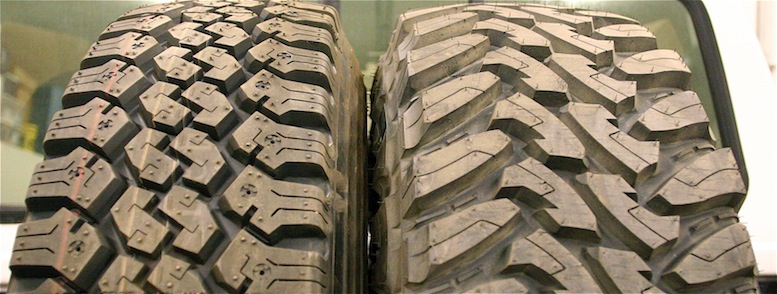Looking For The Offending Tire
Conventional wisdom regarding radial tire pull says that if a tire is the source of the pulling problem it can be diagnosed by using a specific procedure.
-Rotate the front tires side-to-side. If the vehicle goes in the opposite direction, it’s one of the front tires. If the vehicle goes in the same direction the pulling is from one of the rear tires, or is not a tire-related problem. There are more steps, but you can read them on The TireRack’s Pulling Tire Diagnosis PDF.
Though I have been through this procedure a few times before, I printed the PDF to insure I was following the steps exactly and made notes during the process. Guess what? The Tundra still pulled to the right, so I jumbled the position of the tires again and adjusted the tire pressure. Regardless of the position of the tires or PSI, the truck still drifted to the right rather quickly. So is there a chassis or alignment problem if there isn’t a tire problem?
Based on my experiences with my 4Runner I was quite confident that my alignment settings were fine, and not the source of the pulling problem, at least not directly. After numerous alignment adjustments attempting to redirect tire pull on the 4Runner (mostly cross-caster adjustments) some tires would still pull right while others would not. In fact depending on the tire and/or tread pattern, some tires required relatively high cross-caster while others needed very little. Using OE wheels, and in the case of the Tundra, OE sized tires, removes another variable that can make tire pull diagnosis difficult on modified vehicles. Are my modified chassis bent or broken, or are there simply compatibility issues with some tires and platforms?

The Toyo M/T is known to cause a pull or drift on Dodge trucks, are these trucks broken too? My point is that even though the standard and accepted tire-pull diagnosis procedure might indicate the problem is not with the tires, that doesn’t mean there is a problem with the chassis. Having a second set of mounted and balanced tires has helped me confirm this a couple times. The tires may not be defective, but they may still cause a pulling problem on your truck and that doesn’t necessarily mean your truck is damaged or out of adjustment.
My favorite all-around tire remains the Dick Cepek F-C II. The Tundra’s alignment settings were working reasonably well with the F-C II and I was not willing to make changes that might improve the pulling with the S/T MAXXs at the cost of hurting drivability with the F-C IIs. Having two sets of tires isn’t practical if you need different alignment settings for each set.
What Next?
Copyright © 2012 James Langan
